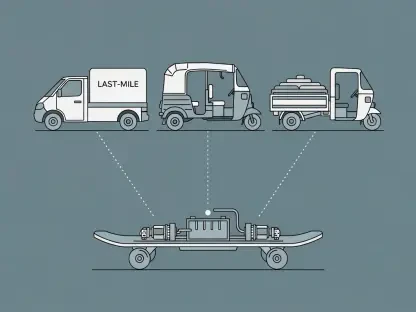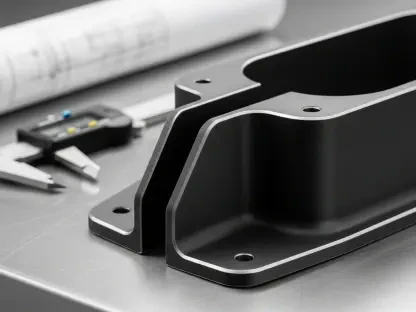Setting the Stage for Additive Manufacturing Dominance
In a world where manufacturing agility defines competitive advantage, Australia has emerged as a formidable player with the launch of the Additive Manufacturing Cooperative Research Centre (AMCRC) on October 22, 2025. Backed by a substantial $57.5 million from the Commonwealth Government through the Department of Industry, Science and Resources, this initiative unites thirteen top universities, the Commonwealth Scientific and Industrial Research Organisation (CSIRO), and over sixty industry partners. With an additional $200 million committed over the next seven years, AMCRC is poised to reshape the additive manufacturing (AM) landscape. This market analysis delves into the strategic implications of AMCRC, examining how it positions Australia to lead in innovation, sustainability, and high-value production amidst global manufacturing shifts.
Unpacking Market Trends and AMCRC’s Strategic Role
Rising Demand for Additive Manufacturing Solutions
The global additive manufacturing market, often termed 3D printing, continues to expand at a rapid pace, driven by demand for customized production and rapid prototyping across industries like aerospace, defense, and medical technology. Current data indicates that AM technologies are increasingly adopted for full-scale production, moving beyond niche applications. AMCRC taps into this trend by fostering an ecosystem that prioritizes research and commercialization, aiming to capture a significant share of this growing market. Industry partnerships with firms like entX and Rosebank Engineering highlight a focus on high-growth sectors, ensuring that Australian innovations align with global needs for precision and efficiency.
Sustainability as a Market Differentiator
Sustainability has become a critical factor in manufacturing markets, with companies facing pressure to reduce carbon footprints and waste. AMCRC addresses this through one of its core research programs, targeting environmentally friendly production systems that minimize energy use while maintaining speed and responsiveness. This focus positions Australia as a potential leader in green manufacturing solutions, appealing to international markets prioritizing eco-conscious practices. The challenge lies in balancing cost with sustainable outcomes, but the potential to enhance brand value and meet regulatory demands offers a compelling market edge for Australian industries.
Advanced Materials Driving Competitive Advantage
Another pivotal trend shaping the AM market is the development of advanced materials, particularly for high-stakes applications in critical mineral processing and feedstock enhancement. AMCRC’s research into certified processes and tailored materials targets industries such as aerospace and medical technology, where durability and reliability are non-negotiable. Comparative analyses suggest that Australian innovations could rival global standards, creating unique selling points in performance-driven markets. However, high R&D costs and regulatory barriers pose risks, which AMCRC mitigates through strategic industry collaborations to accelerate market entry and adoption.
Sector-Specific Growth Opportunities in Defense and Medical
The defense and medical sectors present lucrative opportunities within the AM market, driven by region-specific needs and technological advancements. AMCRC’s emphasis on enhanced finishing and surface technologies caters to Australia’s strategic focus on sovereign defense capabilities while addressing precision demands in medical applications. Emerging innovations, such as AI-driven AM processes, further amplify growth potential by optimizing production efficiency. Misconceptions that AM is limited to prototyping persist, but AMCRC’s targeted initiatives aim to shift market perceptions, showcasing full-scale production capabilities that can redefine sector standards globally.
Forecasting AMCRC’s Impact on Global Manufacturing Dynamics
Capitalizing on Technological and Economic Shifts
Looking ahead, AMCRC is well-positioned to leverage emerging trends that will shape the future of manufacturing markets. Integration of AI, automation, and digital supply chains is expected to enhance AM efficiency, reducing lead times and costs. Economic shifts toward localized production, spurred by global supply chain disruptions, also favor Australia’s push for industrial resilience through AMCRC. Projections indicate that within the next decade, Australia could emerge as a hub for AM innovation, particularly in aerospace and energy, if current investments and collaborations sustain momentum.
Navigating Regulatory and Market Challenges
Regulatory frameworks supporting sustainable manufacturing are anticipated to play a significant role in shaping market dynamics. AMCRC’s alignment with these evolving standards could provide a competitive advantage, ensuring compliance while driving innovation. However, market challenges such as scalability of new technologies and global competition remain critical hurdles. Strategic partnerships and government backing will be essential to overcome these barriers, enabling AMCRC to translate research into market-ready solutions that meet both domestic and international demand.
Economic Implications for Workforce and Industry Growth
Beyond technology, AMCRC’s focus on workforce development signals a broader economic impact on the manufacturing market. By cultivating a skilled labor pool adept in AM technologies, Australia can address talent shortages that often hinder market expansion. This initiative also offers businesses a chance to gain a competitive edge through access to cutting-edge research and training programs. Market forecasts suggest that such efforts could boost industrial output and attract foreign investment, reinforcing Australia’s position as an attractive destination for high-tech manufacturing ventures.
Reflecting on Market Insights and Strategic Pathways
Looking back on this analysis, AMCRC’s establishment marks a defining moment for Australia’s role in the global additive manufacturing arena. The initiative’s focus on sustainability, advanced materials, and sector-specific innovation addresses critical market needs while setting a foundation for long-term growth. Its collaborative model, uniting government, academia, and industry, proves instrumental in bridging research with commercial outcomes. Moving forward, stakeholders should prioritize strategic investments in scalable technologies and advocate for supportive policies to sustain momentum. Businesses are encouraged to explore pilot projects with AMCRC to integrate AM solutions, while policymakers could align regulations with innovation goals. This pivotal step ensures that Australia not only keeps pace with global trends but also charts a path toward market leadership in manufacturing excellence.









